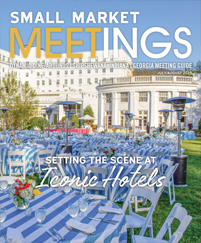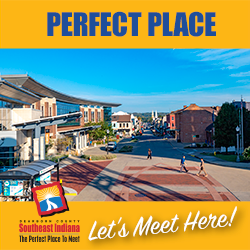If you think of trust falls and ropes courses when you hear the term “team building,” think again. These days, it takes a big tent to hold all the activities and exercises labeled as team building. Although the exercises have different goals, they all share one trait: They bring groups of people together. Here are some thoughts and ideas.
Without a goal, no one wins
Teams that work well together communicate, cooperate, are creative and know their stuff. Team building can sharpen all those skills. When you want to bust out of the proverbial box and boost creativity and collaboration, it might be time to try activities that require groupthink, like highly popular escape rooms. USA Today’s “Best Escape Rooms” list last year included Enchambered in Sacramento, California, where players can solve mysteries like a locked lab or a Victorian manor with a paranormal problem, as well as Decode Escape Rooms, with multiple Michigan locations, where challenges include getting around the world in 80 days. Doing the same sort of exercise in-house can be as simple as challenging staff to come up with wild ideas — no limits — for solving a real-world issue. There are also times when it pays to call in team-building experts to work out difficult issues like communication breakdowns. Teambuilding.com offers a list of 18 top team-building facilitators.
If you build it, who will come?
Team-building exercises that work best are designed for the audience. Knowing your crowd can prevent the groans and eye rolls of those who aren’t on board with the plan and may have good reason for an unenthused response. For example, beach volleyball sounds like fun to some, but completely out of bounds to others. Events that lean on cocktails won’t suit a mostly sober-curious crowd. Different occupations can have different personality traits, so what works for sales managers might not work for structural engineers or schoolteachers. One way to get more buy-in with a crowd, especially if the team-building exercise is aimed at connecting people, is to ask attendees what they would like to do. Provide them with a list of options and design team building based on feedback.
Got game? Pickleball could be the real deal
Sports are a natural for team building, but it can be a challenge to find one that’s a fit for varied athletic abilities. A sport that scores high in ease of play and abundant facilities is the nation’s fastest-growing one: pickleball. Millions of Americans of all ages already play, and there are nearly 70,000 courts, 20,000 of them added just last year. Many courts are in public parks, and now entrepreneurs are getting in the game by building pickleball complexes with add-ons like bars and restaurants. One of the largest of these, Rhythm and Rally Sports and Events in Macon, Georgia, has 32 courts; next year, it will be surpassed when Pure Pickleball and Padel opens in in Scottsdale, Arizona, with 50 indoor courts and a 400-person rooftop bar.
For an authentic experience, volunteer
If you’ve ever volunteered with a group to help others, you know how powerful the experience can be. Scavenger hunts, office Olympics and other events can seem overly orchestrated, but group volunteer efforts are authentic experiences that let peers connect easily and naturally. The best also reinforce an organization’s interests or business philosophies: the Realtors’ association whose members hammer at a Habitat for Humanity house; the organic foods firm whose sales staff spend time on a local farm, harvesting produce to deliver to food pantries; the environmental engineering conference whose attendees plant trees and flowers for a parks department. Large groups of volunteers also make quick work of tasks that overwhelm small nonprofits. Consider the conference group that helped a nonprofit in New Orleans sort through and bag beads and other Mardi Gras throws so they could be resold, with money from sales benefiting the nonprofit.
Exercise mind, body and spirit
Activities that engage mind, body and spirit can help even the most introverted to open up.
One simple and inexpensive exercise that also gives participants a choice is “game day.” This unstructured bonding experience requires only tables, chairs, board games, decks of cards and some video game setups. Participants simply move around the room to play their favorite games. Another idea? Have conference attendees tour a museum to get some fresh ideas and insights. After the group explores exhibits, gather everyone for a nice lunch in a museum space to talk about what moved them, what surprised them and how what they saw might work into their lives going forward. Most convention bureaus are happy to suggest businesses in their city that offer active team-building activities. In Lake Charles, Louisiana, for example, the CVB lists several ideas on its website, including two-hour, flour-filled group lessons full of “pastabilities” at the Pasta Lab.












